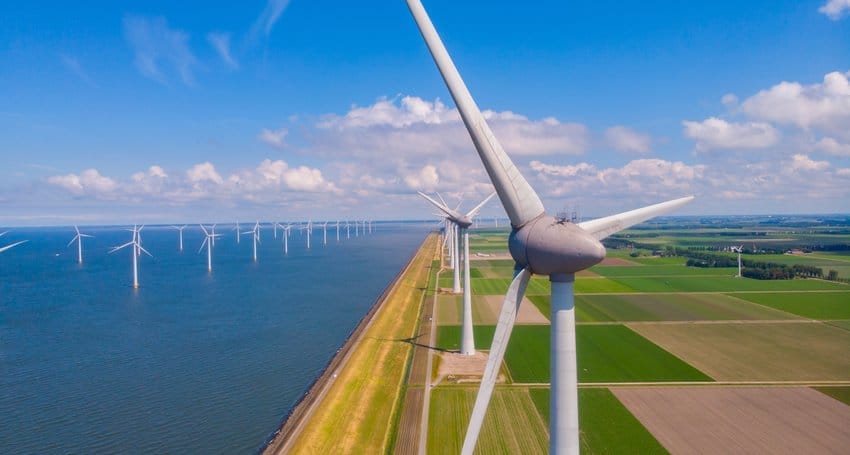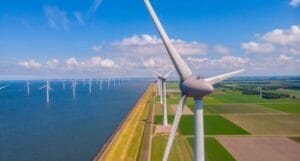Introduction to Renewable Energy in Civil Engineering
Renewable energy is a central element in sustainable construction and green building, two concepts that have become integral to modern civil engineering. Civil engineers now have the responsibility of incorporating renewable energy technologies such as solar energy, wind power, hydropower, bioenergy, and geothermal energy into infrastructure development. This integration requires a comprehensive understanding of each energy source, as well as the principles of environmental engineering. The role of renewable energy in civil engineering extends beyond design and installation. It includes energy efficiency analysis, management of renewable energy projects, and an understanding of the potential impacts on the environment, economy, and society. Civil engineers are, therefore, key players in the transition to a more sustainable future, where infrastructure is not only resilient to climate change impacts but also contributes to a reduction in carbon emissions. Solar energy, wind power, hydropower, bioenergy, and geothermal energy are not only contributing to a greener future but are also transforming the field of civil engineering. The integration of these renewable energy technologies into infrastructure development is redefining the boundaries of civil engineering and pushing the industry towards more sustainable practices.
What is Renewable Energy?
Renewable energy refers to energy derived from naturally replenishing resources, including solar energy, wind power, hydropower, bioenergy, and geothermal energy. Unlike finite fossil fuels, these renewable energy sources are inexhaustible and have a significantly lower environmental impact, making them key to sustainable construction and green building. The concept of harnessing renewable energy is not new. However, advancements in technology have allowed us to capture and convert these natural resources into electricity, heat, and fuel more efficiently. Solar energy, wind power, hydropower, bioenergy, and geothermal energy are now being integrated into infrastructure development on a larger scale, marking a new era in environmental engineering. The potential of renewable energy is immense. With the right technologies and policies, solar energy, wind power, hydropower, bioenergy, and geothermal energy can meet a significant portion of the world’s energy needs. The transition to renewable energy not only promises a cleaner future but also presents opportunities for economic growth and job creation.
The Energy Industry: An Overview
The energy industry is a diverse sector that includes traditional energy sources such as oil, gas, and coal, as well as renewable energy sources like solar energy, wind power, hydropower, bioenergy, and geothermal energy. Despite the dominance of fossil fuels, the energy industry is witnessing a significant shift towards renewable energy, driven by the need for energy efficiency and sustainable development. The renewable energy sector, including solar energy, wind power, hydropower, bioenergy, and geothermal energy, is one of the fastest-growing segments of the energy industry. This growth, however, does not come without challenges. It requires substantial investments in infrastructure development and technology, as well as a skilled workforce capable of managing these new technologies. The transition to renewable energy also faces regulatory and policy challenges, as well as technical and logistical hurdles. However, these challenges are being addressed through innovative solutions in environmental engineering, and the trend towards renewable energy is irreversible. The future of the energy industry and sustainable construction lies in harnessing the power of renewable resources.
In-depth Exploration of Renewable Energy Sources
Renewable energy sources, such as Solar Energy, Wind Power, Hydropower, Bioenergy, and Geothermal Energy, are sustainable alternatives to fossil fuels. These sources are naturally replenished and have minimal impact on the environment. They are being increasingly used in various sectors, including Sustainable Construction and Green Building, due to their sustainability and cost-effectiveness. The adoption of renewable energy technologies, including Solar Energy and Wind Power, has been progressively increasing. This is driven by the need to reduce greenhouse gas emissions and dependence on fossil fuels. These technologies are critical in the transition towards a sustainable energy future. However, there are challenges to overcome, including technological limitations, high upfront costs, and the need for effective policies and regulatory frameworks. Despite these challenges, continuous research, and development in Environmental Engineering and Infrastructure Development can help address these issues. This will pave the way for a cleaner and more sustainable energy future, where Energy Efficiency is prioritized.
Harnessing the Power of Solar Energy
Solar Energy is one of the most abundant and readily available renewable energy sources. It harnesses the power of the sun to generate electricity, either directly using photovoltaics (PV), or indirectly using concentrated solar power (CSP). Both technologies are suitable for different applications, such as Sustainable Construction and Green Building, depending on factors such as geographical location and energy demand. Photovoltaic technology, a key aspect of Environmental Engineering, converts sunlight directly into electricity using semiconducting materials. It is highly scalable, suitable for small rooftop systems for residential use to large solar farms for utility-scale power generation. Despite its high upfront cost, the long-term benefits in terms of energy savings and environmental impact make it an attractive investment. Concentrated solar power, on the other hand, uses mirrors or lenses to concentrate a large area of sunlight onto a small area. The concentrated light is then used to heat a fluid, which is used to produce steam that drives a turbine connected to an electricity generator. While CSP systems are generally more suited for utility-scale applications due to their high power output and the ability to store energy for use during periods of low sunlight, they require significant land area and high initial investment.
Maximizing the Potential of Wind Energy
Wind Power is another significant source of renewable energy. It uses the kinetic energy of the wind to drive turbines, converting it into mechanical energy, which is then converted into electricity. Wind Power is a clean, renewable, and widely available resource, with the potential to significantly contribute to the global energy mix. Wind turbines can be installed on land or at sea (offshore wind farms) and can vary in size from small turbines for individual homes to large wind farms for utility-scale power generation. The power output of a wind turbine is dependent on several factors, including the wind speed, the size of the turbine, and the air density. Despite the intermittent nature of wind, advancements in technology and grid management have made it possible to integrate Wind Power into the power grid effectively. Furthermore, the cost of Wind Power has been decreasing over the years, making it competitive with conventional energy sources. However, Wind Power also faces challenges, including the need for significant land or sea space, potential impact on wildlife, and public opposition due to noise and aesthetic concerns. Nonetheless, with ongoing research and development, these challenges can be mitigated, making Wind Power a viable and sustainable option for the future.
Understanding Hydro Energy
Hydro energy, a key player in the renewable energy sector, is a form of energy produced by harnessing the power of moving water. As a critical component of sustainable construction and infrastructure development, hydro energy, also known as hydropower, contributes significantly to global electricity production. Hydropower plants operate by utilizing a dam to store water in a reservoir. As part of this green building initiative, the stored water is released to flow through a turbine, activating a generator to produce electricity. The volume of water and the height of the water fall, or ‘head’, are crucial factors determining the amount of electricity produced. Hydropower facilities are classified into impoundment, diversion, and pumped storage, each playing a vital role in environmental engineering. While impoundment and diversion facilities are focused on water storage and channeling, pumped storage facilities store energy in the form of water at different elevations. Despite its benefits, hydro energy has its challenges. Damming rivers can disrupt local ecosystems and displace wildlife. However, with careful planning and management, hydro energy can be a key player in energy efficiency and sustainable construction.
Geothermal Energy: A Sustainable Option
Geothermal energy, a renewable and sustainable energy source, harnesses the earth’s internal heat to generate electricity or provide heat for buildings. This form of energy is a cornerstone of sustainable construction, infrastructure development, and environmental engineering. Geothermal energy plants, part of a green building initiative, operate by drilling wells into the earth’s crust to tap into geothermal reservoirs. The heat from these reservoirs is used to produce steam, powering a turbine connected to a generator to produce electricity. Geothermal energy is a reliable source of power, independent of weather conditions unlike wind power or solar energy. It’s a clean energy source, producing low emissions, and can provide a constant source of power, enhancing energy efficiency. However, geothermal energy is location-specific and can cause surface instability, leading to earthquakes. Despite these challenges, geothermal energy is an integral part of the renewable energy portfolio, contributing to sustainable construction and green building.
Biomass Energy: Turning Waste into Power
Biomass energy, a form of bioenergy, uses organic material to produce heat, electricity, or biofuels. This renewable energy source is a significant part of green building and infrastructure development, turning waste into a valuable energy source. Biomass energy is generated by burning the organic material directly or converting it into a gas or liquid fuel. This process, a key aspect of environmental engineering, involves burning biomass in a boiler to generate steam, which drives a turbine to produce electricity. Biomass energy contributes to energy efficiency by using waste materials that would otherwise be discarded. It also helps reduce greenhouse gas emissions, offsetting the carbon dioxide released during combustion with that absorbed by the plants during photosynthesis. However, biomass energy requires a large amount of material and land, which can lead to deforestation. Despite these challenges, biomass energy remains a promising option for turning waste into power, contributing to sustainable construction and green building.
Conclusion
In conclusion, the integration of renewable energy into civil engineering is a transformative movement towards sustainable development and a greener future. Renewable energy sources like solar, wind, hydro, geothermal, and biomass offer diverse opportunities for creating eco-friendly and energy-efficient infrastructure. While each source has its unique advantages and challenges, they collectively represent the paradigm shift needed to combat climate change, reduce carbon emissions, and promote global energy security.
Civil engineers are at the forefront of this transition, applying innovative technologies and sustainable practices to build resilient structures that harmonize with the environment. As the sector continues to evolve, it is imperative that professionals in the field remain committed to continuous learning and adaptation to new methods that support the growth of renewable energy.
The journey towards a fully sustainable construction industry may be complex, but the potential benefits for the planet and future generations make it a path worth pursuing. By harnessing the power of renewable resources and overcoming the challenges they present, civil engineering can lead us towards a cleaner, more sustainable world where energy efficiency and green building are not just ideals, but realities.




